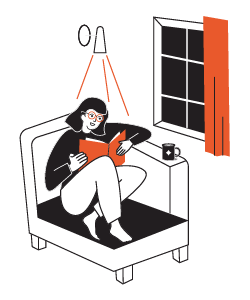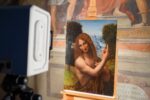Marco Cingolani – Uncanny Zone
 (3), 2015, Graphite on dibond, 39 x 52 cm.jpg)
La pittura si nutre di sogni antichi e porta in sé la consapevolezza che sono la figura e il figurare a discriminare l’esperienza.
Comunicato stampa
La pittura si nutre di sogni antichi e porta in sé la consapevolezza che sono la figura e il figurare a discriminare l’esperienza.
Alla radice del linguaggio e di ogni concetto c’è la figura stagliata sullo sfondo ed è questo continuo figurare dei corpi che il corpo dell’artista incarna nel suo operare.
Spesso la società, in particolare quella artistica, tende a censurare lo sguardo sottoponendolo al giudizio del concetto, ma la pittura non porta con sé la scusa del senso, rimane, fortunatamente, senza “giustificazioni”, come ogni carisma.
Il suo “limite” è di essere perturbante rispetto ad una società artistica che si riflette in un’arte che invece aderisce a scopi, progetti, gusti e creatività; la pittura propone invece un’alterità rispetto ad un’arte morale, adeguata e riflessiva, proprio perché è sessualità: pittura come “uncanny zone”.
Le opere d’arte dipinte e disegnate sono diventate un Unheimlich, il contrario del confortevole Heimlich dell’arte che rispecchia la piccola borghesia delle merci in competizione tra di loro. Nella casa (Heim) la pittura, il disegno, diventano l’ospite inatteso, il ritornato, il rimosso che viene alla luce come splendore. La tradizionale familiarità con la pittura diventa invece oggi elemento di alterità, costringendo l’esperto a diventare contemplatore ed ammiratore: l’improvvisa inconsistenza semantica del suo ruolo corregge il difetto dell’esperto facendolo tornare al ruolo primario di sedotto.
Il perturbante è logica di seduzione che produce l’affioramento del figurare. “Il 5 febbraio del 1863 Giuseppe Fiorelli, direttore degli Scavi a Pompei, fece stemperare del gesso, che venne versato in alcune cavità, in fondo alle quali si scorgevano delle ossa. Dopo aver atteso che il gesso fosse asciutto, venne tolta con precauzione la crosta di pomici e di cenere indurita. Eliminati dunque questi involucri, vennero fuori quattro cadaveri.” Dopo millenni riaffiora il corpo creato dall’assenza del corpo, ma anche sagome di porte, armadi e sedie, radici di piante, animali. L’artista produce questo affioramento usando il proprio corpo e il proprio sguardo come metro e misura del mondo.
The painting is nourished by ancient dreams and brings with itself the awareness that it is the figure and the figuration that distinguish the experience.
Root of language and of every concept, there is the figure that stands against the background and it is this incessant figuration of bodies that the artist embodies in his work .
Society, particularly the artistic one, often tends to censure the gaze, subjecting it to the judgment of the concept, but painting does not carry with itself the excuse of sense: conversely, it does not need "justifications", just as any charisma.
Its “limit” is to be uncanny for an artistic society reflected in an art that, instead, adheres to purposes, plans, tastes and creativity. Painting proposes in reverse from a moral, proper and thoughtful art, because painting is sexuality: Painting as an "uncanny zone".
Painted or drawn artworks became Unheimlich, which is the opposite of the more comfortable Heimlich of art, reflecting the middle class, increasingly focused on goods and always in competition.
In the house (Heim) of painting, drawing becomes the unexpected guest, the restituted, the removed one that comes to light as splendor.
Nowadays, however, the traditional familiarity with painting becomes an element of otherness, forcing the expert to become a contemplator and a mere admirer.
The sudden semantic inconsistency of his role corrects the defect of the expert, demanding his return to the primary role of seduced.
The logic behind the uncanny is the logic of seduction that creates the figuration itself. “February 5, 1863 Giuseppe Fiorelli, excavation director at Pompeii, poured gypsum in some cavities which contained human bones. After waiting for the plaster to dry, the crust of pumice and hardened ash was carefully removed and four corpses became visible”. After millennia, the body created by the absence of the body becomes visible again, with silhouettes of doors and chairs, roots and animals. The artist produces this emergence of the figure using his body and his eyes as a measure of the world..
Marco Cingolani
Nato nel 1961 a Como, vive e lavora a Milano, / Born in 1961 in Como, Italy, lives and works in Milan.
Tra le principali mostre personali e collettive / Solo and group exhibitions include: Galleria Emilio Mazzoli, Modena, Italy; Galleria Continua, S. Gimignano, Italy; Musée d’Art Contemporaine di Gent, Belgio; Museo Pecci, Prato, Italy; Galleria Nazionale d’Arte Moderna, Roma, Italy; 53esima Biennale di Venezia, Italy; PAC, Padiglione d’arte contemporanea, Milano, Italy.



